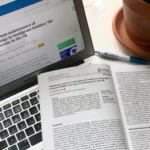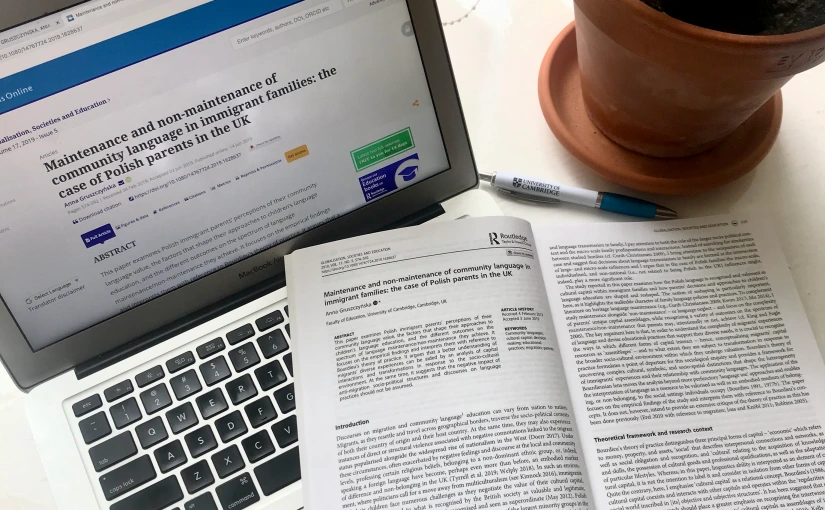The process of accomplishing a PhD is a great accomplishment, yet the process of completing the dissertation does not end with the final sentence of the dissertation. It is another art to transform that research into publishable articles with its own rules, schedules, and expectations. This blog is a manual to the general dissertation-to-publication route that contains practical tips and a step-by-step guide to publishing your research.
Why Publishing Your Dissertation is A Good Idea?
There are various benefits of publishing beyond your dissertation. It has the advantage of building your scholarly brand at an early stage, raising the profile and presence of your research, and strengthening your CV or resume in academic employment, fellowships, and grant applications. Compact papers with a direct contribution to knowledge, methodology, or theory are always desired in journals. Publishable articles are a way of engaging wider audiences, and are an opportunity to get an early review of your work, as well as to polish your arguments during the review through repeated writing and revision.
Step 1: Revise Your Dissertation to be Published
Dissertations are long and extensive, whereas the majority of journals have shorter and focused articles. Start by defining the main contributions of your work. What is the one new thing that the readers can learn? What are some of the chapters or findings that would make up a coherent journal article? Common strategies include:
- Choose a standalone paper: Choose one or two chapters containing a clear, publishable contribution that can be regarded on its own.
- Obtain a new angle: Readdress findings to answer a certain research question within the scope of the journal.
- Simplify and restructure: Cut secondary material, background facts that the reader does not require to understand the article, and too much methodology or appendices that are not at the center of the argument.
You can hire a thesis editing service, even to make the process more seamless and quicker.
Step 2: Choose the Right Journal
The choice of the journal is important. Given the following factors, it might be wise to decide on the place of submission:
Scope and audience
Have you published in your subfield within the journal? Are you going to attract the right readers?
Article type
There are those journals that contain short communications, notes, or replication studies. There are other ones that receive detailed original research.
Impact and speed
Check the impact and normal turnaround periods of the journal. Open access alternatives may be more comprehensive, yet expensive.
Publication guidelines
Every journal contains publication formatting, word count, and citation guidelines. Certain ones have a particular structure, whereas others can be more liberal.
Make a list of short list of 3-5 target journals. Read more recently published articles to gauge, pay attention to the structure of the manuscript, and note the author guidelines with each.
Step 3: Literature synthesis
Journals may prefer a brief literature review that puts your contribution into perspective without necessarily having to repeat your whole dissertation. Here’s how to tighten it:
- Mark the gaps that your work addresses and clearly identify your role in comparison with what work has already been done.
- Narrow on theory or method; in case your dissertation cuts across more than one theory or method, you can write one paper.
- Use the latest useful literature; refer to a few important sources, not an exhaustive list.
Step 4: Emphasize Methods and Replicability
Readers and reviewers desire to know how you came to your conclusions, which is usually more focused on methodology than in a dissertation. To strengthen this section:
- Include a clear and replicable methods section. Include sufficient information to include your data sources, procedures, materials, and methodology so that another researcher would be able to replicate your work.
- The reasoning is to justify why certain methods or data sets were selected with limitations.
- Add robustness tests. If there are some, provide sensitivity analysis, alternative specifications, or validation.
Step 5: Make a Revision of your Findings and Discussion
The discussion and results are usually mixed in chapters in a dissertation. In a journal article, you usually come up with a narrowed results section and then the discussion that explains findings against the literature.
Give clear and independent results: Provide tables and figures that can be easily used to present the important findings.
Go back to the research question: All findings must be related to the main contribution.
Talk implications and limitations: Have your study say what it can and cannot say, and give suggestions on where to go in future research.
Step 6: Develop an Attractive Abstract, Title, and Keywords
The first things that your article shows to the reader are the summary title and keywords. Make them concise, informative, and clear.
- summary: Specify the issue, methodology, major findings, and implications.
- Title: Be specific and clear; do not use any needless words unless it is the common usage in your field.
- Keywords: Choose words that represent the main themes and that would enable the researchers to find your work.
Step 7: Use a Steady Tone and Style
You are supposed to maintain your own formal tone, the dissertations do not necessarily have the same tone as journal articles. Follow the style guide of the target journal like its citation format, headings, figures, and tables.
- Citation style: The journal favors a given system of reference and in-text citation.
- Headings and structure: Use the structure suggested by the journal, which might not be the same order as your dissertation chapters.
- Typography: Have figures, tables, and captions as per the requirements of the journal.
Step 8: Get Early and Regular Feedback
Peer feedback is invaluable. Submit a draft to your supervisor, committee members, and other people who can offer you fair criticism.
Pre-submission feedback: Asking one to carefully read with specific questions like is the argument convincing, are the methods well-developed, and are the results strong enough.
External reviewers: Take into consideration a workshop/manuscript-in-progress session with other-institutional peers.
Editorial feedback: Ideally, seek the advice of another experienced person in academic publication, or a writing mentor.
Step 9: Submission to Journals
The process of submission to a journal begins a new stage of patience and strength. The typical steps include:
Manuscript preparation: The Manuscript should be prepared to meet the requirements of the target journal: formatting, pictures, tables, and references should be prepared.
Wait for a review or rejection: A desk rejection occurs quickly in case of a bad fit or formatting. Otherwise, the paper will get into the peer review step.
Reviewer comments: The vast majority of the revisions will involve changes. Give a brief, point-by-point answer on how you responded to each of the recommendations.
Acceptance or rejection: Ultimately, the review may be followed by more revisions and editing. The process of making acceptances can sometimes be a matter of minor adjustments; it can take months to make big adjustments.
Post-acceptance: Once acceptance has been received, you will deal with proofs, licensing, and publishing agreements.
Conclusion
Writing your dissertation is rewarding, but not as fulfilling as publishing it in a journal for your peers and professors to study your research as well. You can carefully draft a publishable article from your dissertation, or you can have a master’s thesis helper to assist you from writing the thesis to even publishing it. This guide sums up all the points one needs to keep in consideration when looking to leave a notable mark in their field of study.










